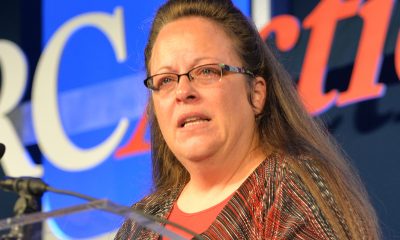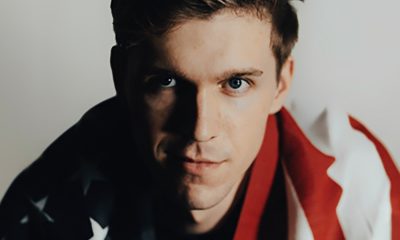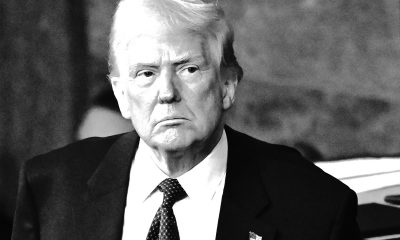Arts & Entertainment
Arts briefs: Feb. 18
New ‘Joseph’ production to open, HRC to hold adoption forum and more
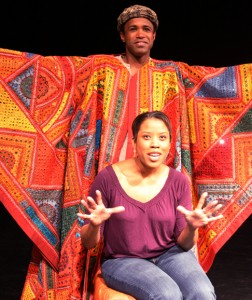
Alan Wiggins as Joseph and Eleasha Gamble as the Narrator in ‘Joseph and the Amazing Technicolor Dreamcoat’ directed by David Hidler. Photo courtesy of Olney Theatre Center.
‘Joseph’ production slated for Olney
David Hidler’s take on “Joseph and the Amazing Technicolor Dreamcoat” opens Wednesday at 8 p.m. on the mainstage Olney Theatre Center (2001 Olney-Sandy Spring Rd).
“When I think of ‘Joseph and the Amazing Technicolor Dreamcoat,’ I think of a show as big as its title – splashy, flashy, big dance numbers, terrific music … it all feels epic, gigantic,” said Hilder in a press release. “And yet when I read the story … what strikes me is much simpler and, fundamentally more personal … It’s a powerful story we all can learn from.”
“Joseph” is the first full-length musical by Sir Andrew Lloyd Webber and Tim price that began as a 20-minute “pop cantata” by Webber for a school choir to perform in 1968 and was produced on the London stage five years later. The show went on Broadway in 1982.
Joseph will be played by Alan Wiggins, a first time performer at Olney. His father is played by R. Scott Williams (who also plays Potiphar). Williams has performed at Olney in “Of Mice and Men” and has appeared locally on stage at the Kennedy Center, Arena Stage, the Shakespeare Theatre, Washington Stage Guild and Wayside Theatre.
Another performer returning to the center is Eleasha Gamble as the Narrator, a role in which she made her professional debut at Olney in 1999.
Joseph’s brothers will be played by Stephawn Stephens, Mardee Bennett, Nick Lehan, Kurt Boehm, Parker Drown, L.C. Harden Jr., Vincent Kempsi, Ben Lurye, Jeramiah Miller, Andrew Sonntag and Russell Sunday.
On Wednesday through Saturday, there will be a performance at 8 p.m with matinees on Saturdays and Sundays at 2 p.m. Sundays and March 8, a Tuesday, will also have a 7:30 p.m. performance. Two additional matinees will be on March 2 and 16 at 2 p.m.
Tickets start at $26 with discounts available to groups, seniors, military and students and can be purchased by calling the box office at 301-924-3400 or visiting olneytheatre.org. The show will run through March 20.
HRC plans adoption forum
This Wednesday, Human Rights Campaign (1640 Rhode Island Ave., N.W.) is hosting an adoption forum.
Ellen Kahn, Family Project Direct at HRC says there are major adoption needs in the D.C. area.
“We are a city that has a large population of older children in foster care,” Kahn said.
These older children will age out of the system if they do not find a family, she said.
That’s why she is organizing this forum.
“The long term goal, of course, is to find families for some of these young people who might not otherwise have these connections,” Kahn said.
There will be a number of speakers from different organizations at the forum, such as Adoptions Together and D.C. Child and Family Services. These representatives will be talking about the work that they do and the ways in which they help find families for children in foster care.
They will share local resources and what the process of becoming a foster parent or adopting entails. The panelists will also answer frequently asked questions.
The questions Kahn always hears is whether these organizations trying to place children in families will allow a gay man or lesbian to adopt.
Kahn says a disproportionate number of youth identify somewhere on the LGBT spectrum and agencies are having trouble placing these children because not everyone is open to adopting or fostering an LGBT child.
Agencies are trying to find parents who are open to the idea of adopting an LGBT youth or who have experience or are knowledgeable about the LGBT community. They are looking for parents, gay or straight, who would be committed to supporting these youths.
According to Kahn, there will also be some people on the panel who are raising teens to share their experiences of going through the process and being a support for a child who was in the foster care system. She hopes they will have one or two youths who can share their experiences about being in the system and finding a family.
Kahn will be on the panel as well.
This is a free event that is opened to all families whether they are single, partnered, married, gay or straight. Doors open at 6 p.m. and the program begins at 7.
“If anybody has even the slightest instinct to be a resource, we want them to come through the door,” Kahn said.
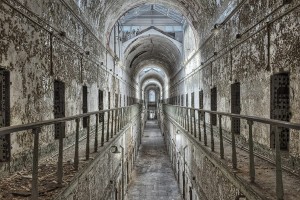
Sandy LeBrun-Evans photograph titled "View of Cells" is part of the f11 exhibit, "A Room of Our Own," which opens March 1 at Pepco Edison Place Gallery.
Rooms explored in new exhibit
f11 Women’s Photography Collective presents “A Room of Our Own” which opens March 1 at Pepco Edison Place Gallery (702 8th St., N.W.).
Sponsored by The Art League in Alexandria, “Room” features more than 50 images created by the 18 members of f11.
“The images are as rich and varied as the methods used to make them, reflecting the different perceptions, styles and processes of f11’s members,” Rose O’Donnell, Gallery Director for The Art League said in a press release.
Some of the photographs on display include Sandy LeBrun-Evans images of the Eastern State Penitentiary in Pennsylvania and Sheila Galagan’s series of images from Rock Creek Cemetery in Petworth.
Pamela Viola’s “interpretive” Egyptian landscapes will also be on display.
“I consider my work interpretive photography; meaning I develop the image beyond the straight photographic capture — sometimes layering multiple images and textures together to create an embellished landscape,” Viola said in an artist’s statement on her website.
The exhibit will run from March 1 to Apr. 1. There will be an opening reception on March 10.
The gallery is open from Tuesday through Friday from noon to 4 p.m. It will also be open March 12 and 26 from noon to 4 p.m. This exhibit is free.
Dining
Spark Social House to start serving alcohol
D.C.’s only ‘LGBTQ alcohol-free bar’ changes course

Washington, D.C.’s only LGBTQ alcohol-free bar will lose that distinction in December: Spark Social House, located at the corner of 14th and U streets, N.W., will no longer serve only booze-free drinks.
Spark Social, as it is commonly known, received significant media attention and accolades when it debuted in March. Opening in the beating heart of the LGBTQ community’s social scene, its doors stand next to other popular nightlife establishments, including Crush, Bunker, District Eagle, and Revolt (which opened after Spark Social). All of those other bars serve alcohol.
Spark maintained a separate identity, creating a “third space” for sober guests or those who did not wish to spend their evening in an alcohol-forward space. Owner Nick Tsusaki, a former bartender, opened Spark Social to fill a gap he saw in queer nightlife establishments that centered drinking. Instead, Spark was intended to be a convening bar. By day, it has served coffee and tea as a café for remote workers, meetings, and catch-ups. In the evening, the bar hosts a wide array of events, with DJs, dancing, drag queens, speakers, open mic nights, and stand-up comedy, movie showings, among other events.
At the bar, it served cans, bottles, and craft cocktails, as well as “wellness drinks” or functional beverages like mushroom elixirs, Kava, and kombucha. All of these are currently non-alcoholic. Currently, in November, the bar is serving seasonal morning drinks like toasted almond and French Toast lattes, plus non-alcoholic cocktails like a “Hottie Hottie” with non-alcoholic spiced rum, lemon, and maple butter; plus a maple espresso “martini” without liquor, which includes mushroom tinctures.
Spark Social, even in its short time in existence, won “Best DC Coffee Shop” in the 2025 Washington Blade annual poll.
Nevertheless, in early November, the Spark owners and leadership team hosted a town hall to share updates and hear directly from the community about the next chapter for Spark.
According to the bar’s Instagram posts, the town hall reviewed the intent and purpose behind the bar: to create a queer third space where people can connect, create, and feel at home.”
“After eight months as a fully non-alcoholic bar, we’ve learned that sobriety exists on a spectrum and inclusion means offering choice.”
To that end, in December, Spark’s offerings will evolve. Instead of serving only drinks without alcohol, there will be a new “1 for 1” menu in which every cocktail comes in two versions: booze and boozeless. While alcohol will be served, the bar owners insist that they remain committed to maintaining its welcoming and relaxed vibe.
In a separate post, Spark wrote that “Although this was not our intent when we started the business, after 6 months of operations we’ve made the difficult decision to change our business model so that we can keep providing this space to the community.”
They acknowledged that this pivot might have “come as a surprise,” and offered to received feedback to ensure that the bar’s initial objective of being a unique space could continue.
Alcohol will only be served at the bar in the evenings during the week, and all day during the weekend.
Tsusaki spoke to the Blade about the changes and offered these statements:
“When we opened, the goal was to create a queer third space where people could spark a connection, spark creativity, spark an idea — especially for folks looking for an alternative to the typical drinking environment,” Tsusaki said. “From day one, Spark has been about the vibe — a place where you can just exist, feel at home, and be surrounded by community without pressure or pretense. After eight months as a fully non-alcoholic space, we learned a lot about what people actually want from spaces like this. Most folks exist somewhere on a spectrum of sobriety — some are fully sober, some are sober-curious, some drink occasionally. We realized that if our mission is to bring people together, inclusion has to mean options for everyone.
“We had to face the financial reality of running a small independent space in D.C. The city has been hit hard — especially with reduced spending and recent federal layoffs — and it’s made things tough for hospitality businesses like ours. Adding alcohol helps make Spark sustainable so we can keep doing what we do: building community, creating jobs, and keeping this space alive for the long haul.
“We’re using this moment to make the space even better — enclosing the back patio so it’s usable year-round, upgrading our DJ booth and sound system, and making a few design tweaks that better reflect the energy and creativity Spark has always had.”
Photos
PHOTOS: Miss Gay Mid-Atlantic America
Victoria Bohmore crowned in regional pageant held at Freddie’s Beach Bar
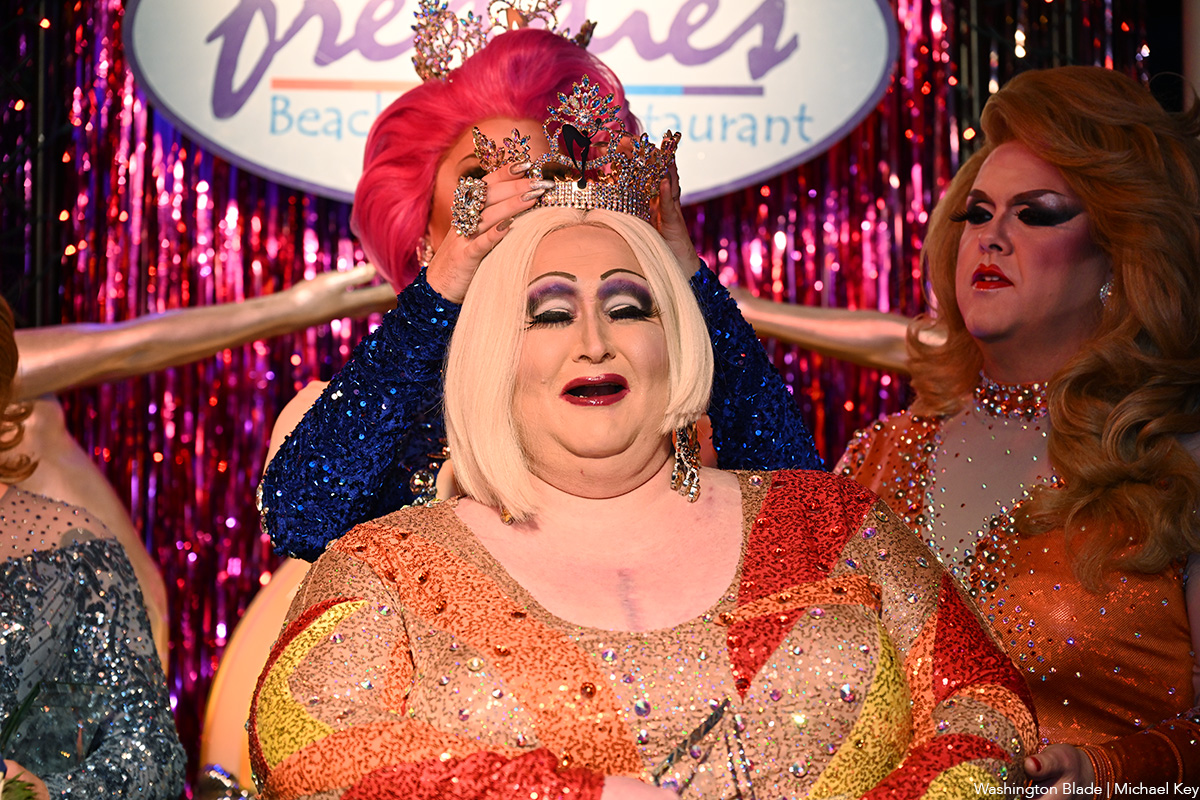
The 2025 Miss Gay Mid-Atlantic America Pageant was held at Freddie’s Beach Bar in Arlington, Va. on Friday, Nov. 7. Victoria Bohmore was crowned the winner, with Lady Lords named first alternate. Bohmore and Lords both qualify to compete against the winners of the Miss Gay Maryland America Pageant as well as other state and regional title holders from across the nation at the Miss Gay America Pageant in January.
(Washington Blade photos by Michael Key)
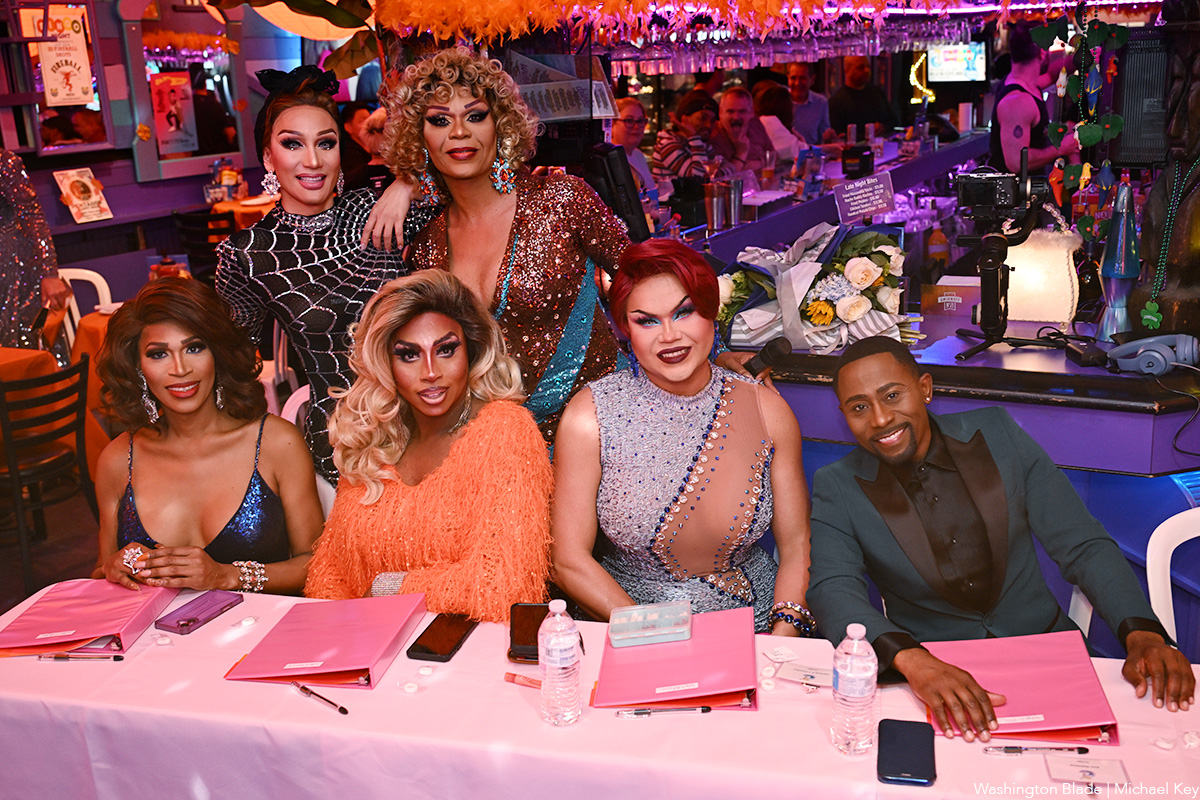


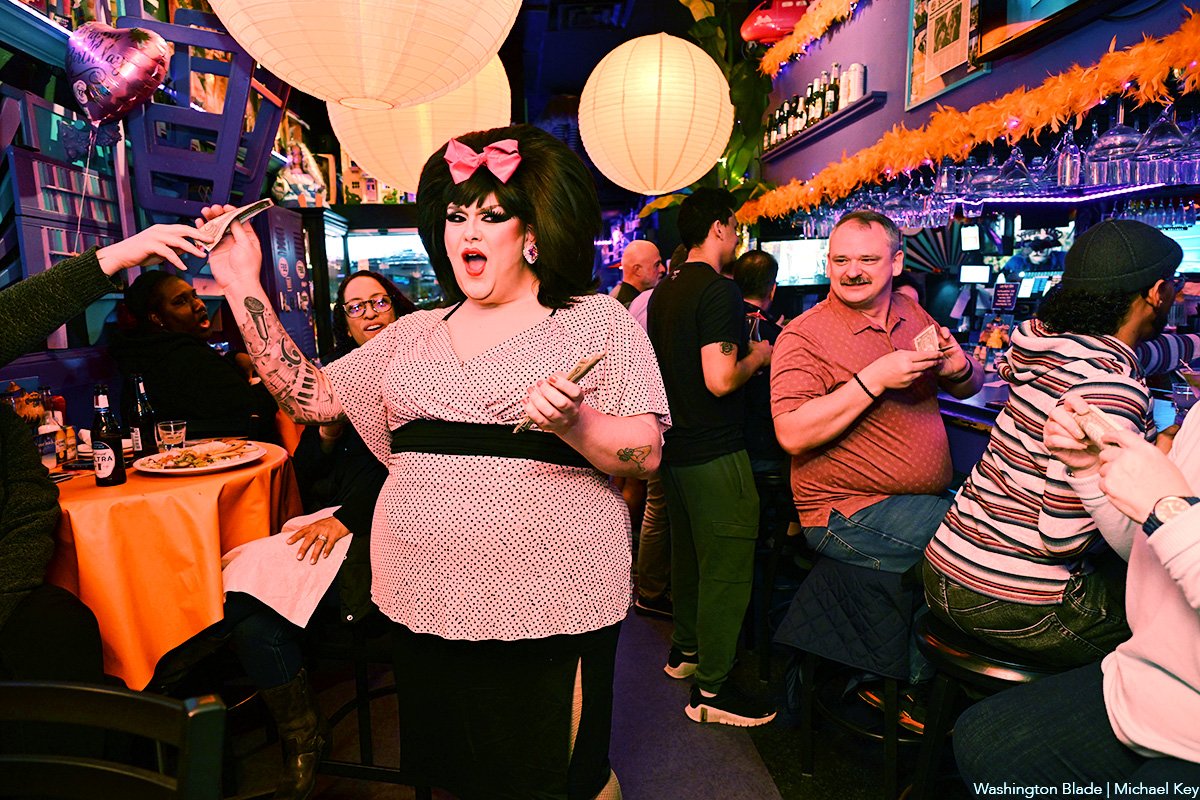


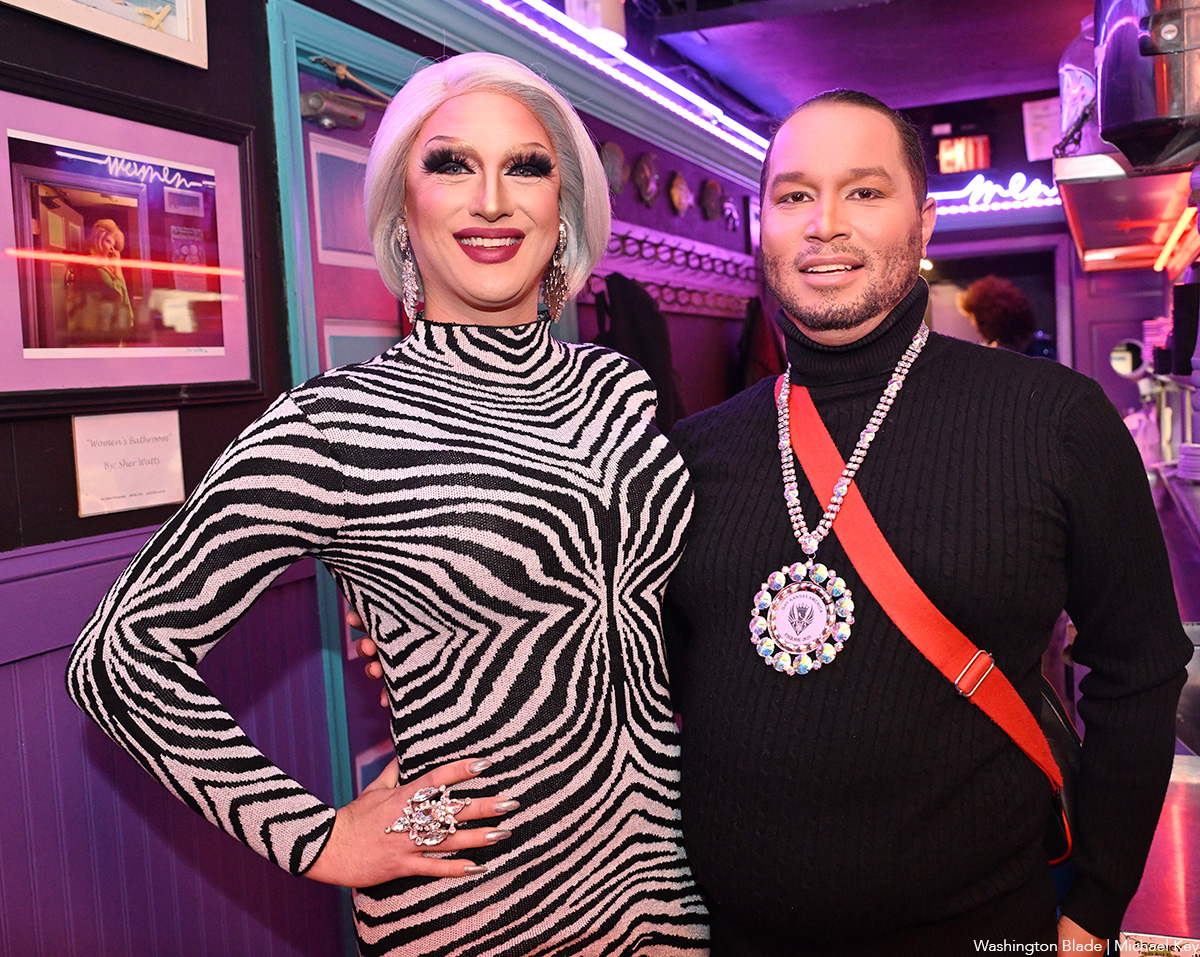



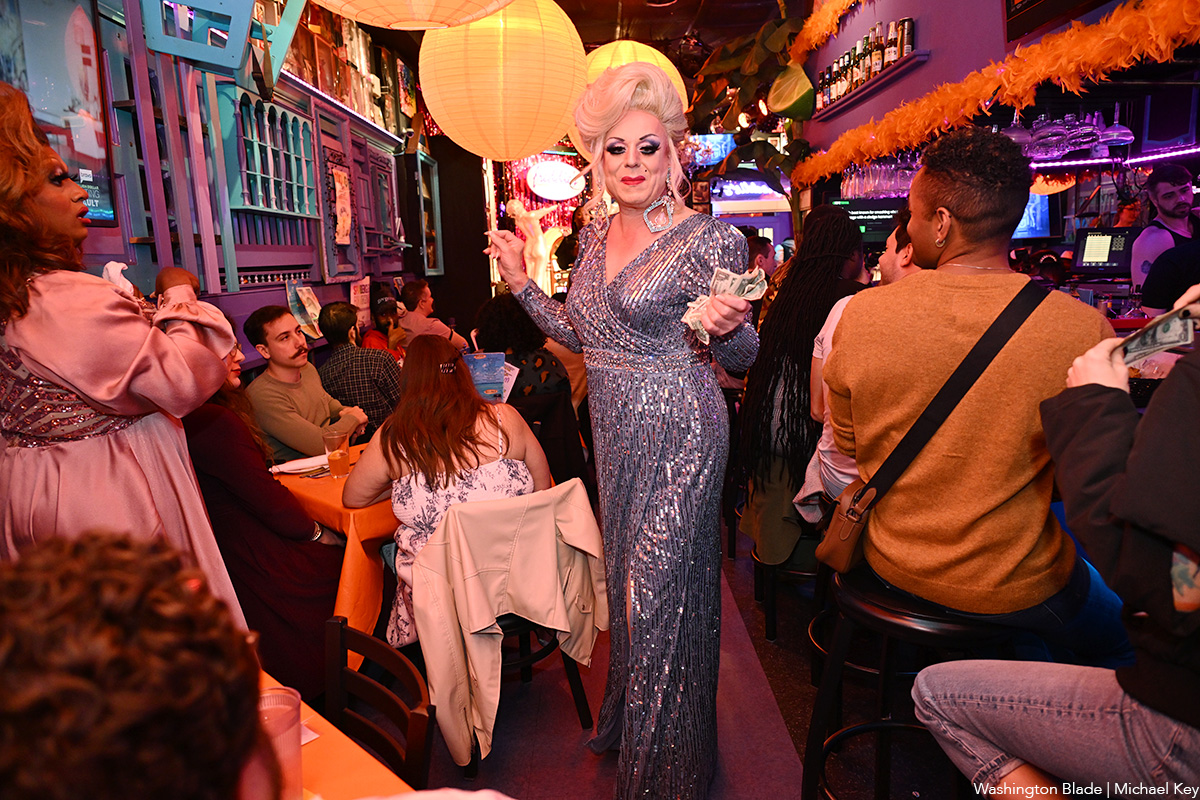



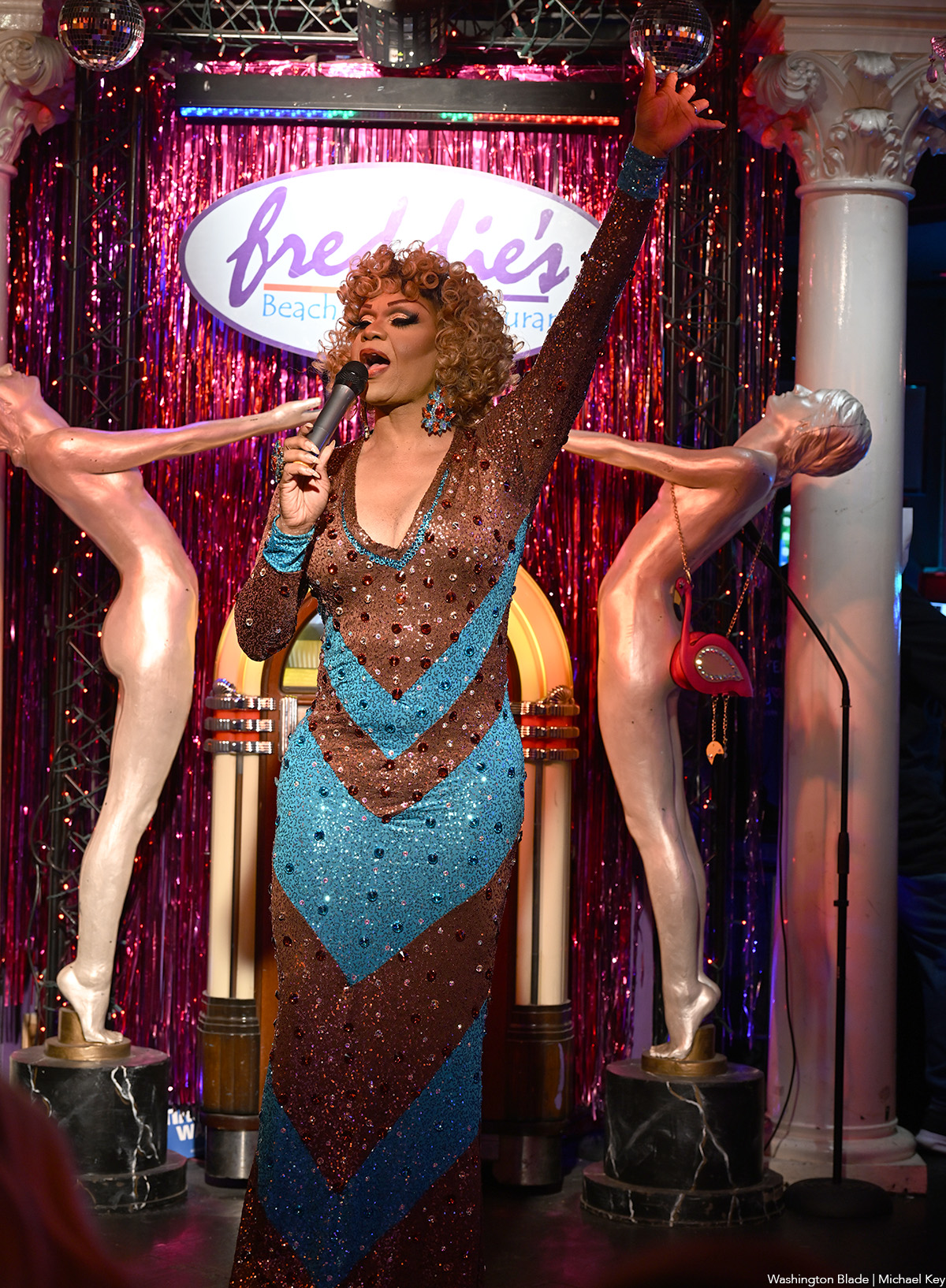

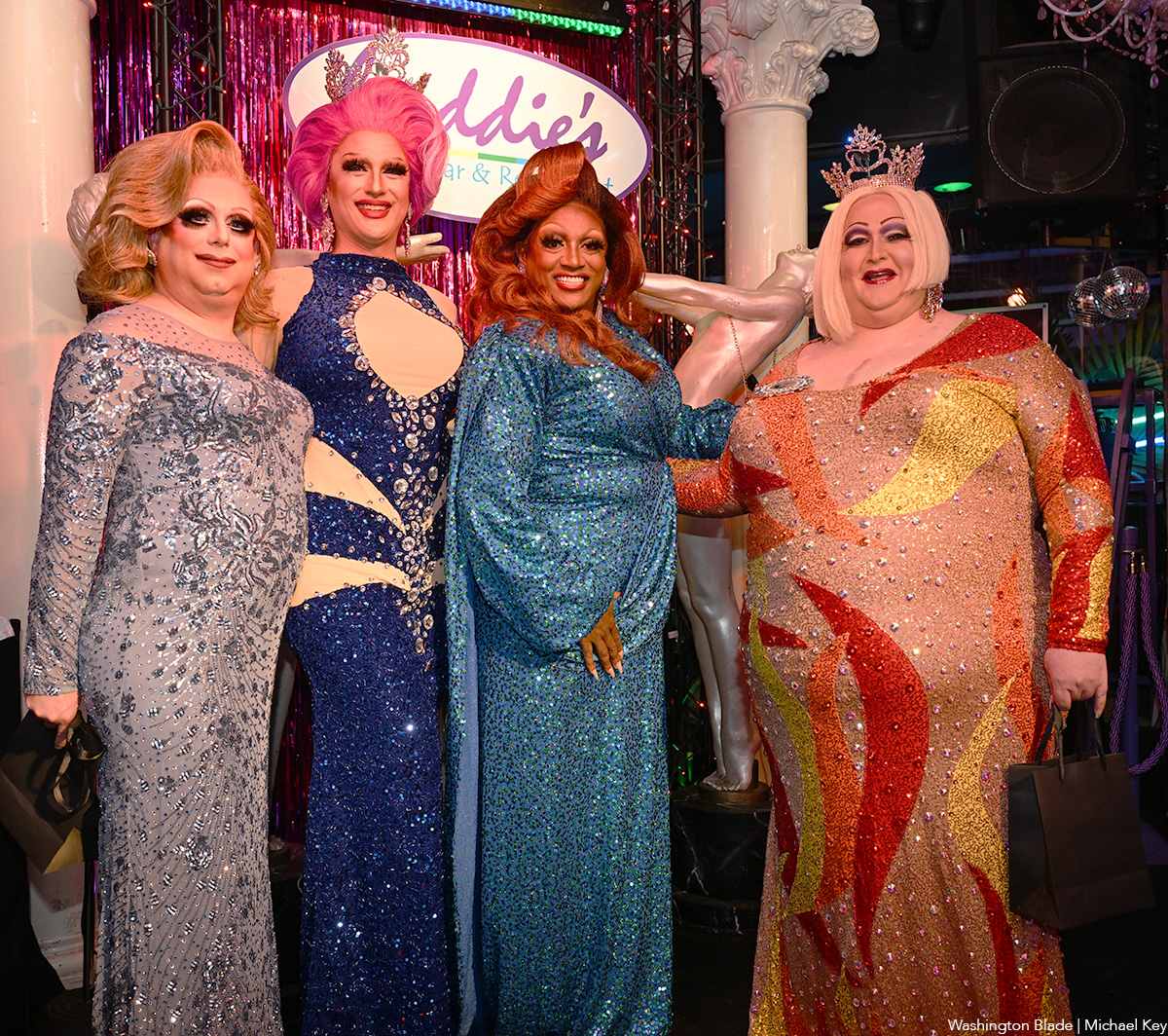
Books
A history of lesbian workarounds to build family
Fighting for the right to have and raise kids
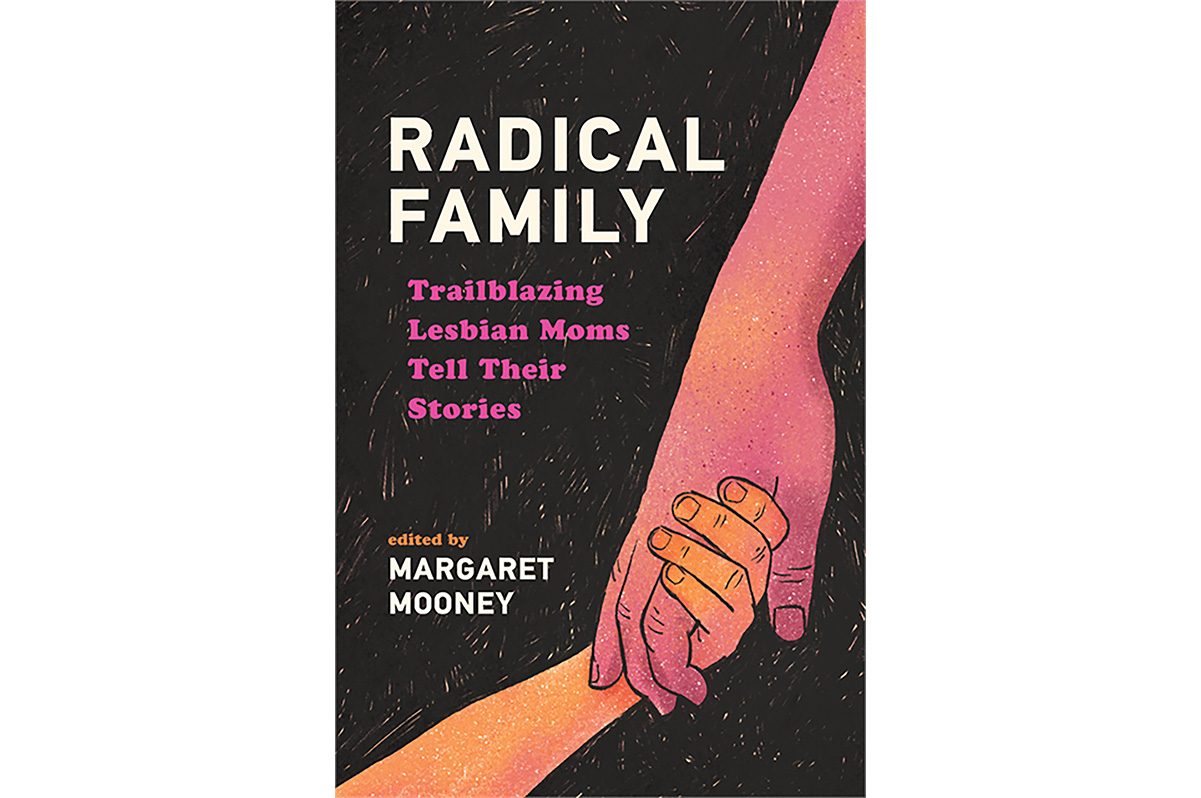
‘Radical Family: Trailblazing Lesbian Moms Tell Their Stories’
Edited by Margaret Mooney
c.2025, Wisconsin Historical Society Press
$20/150 pages
You don’t have a white picket fence with an adorable gate.
The other parts of the American Dream – the house in the suburbs, a minivan, and a big backyard – may also be beyond your reach. You’ve never wanted the joyous husband-wife union, but the two-point-five kids? Yeah, maybe that’s possible. As in the new book “Radical Family,” edited by Margaret Mooney, it’s surely more so than it was in the past.

Once upon a time, if a lesbian wanted to raise a family, she had two basic options: pregnancy or adoption. That is, says Mooney, if she was willing to buck a hetero-centric society that said the former was “selfish, unnatural and radical” and the latter was often just simply not possible or even legal.
Undaunted, and very much wanting kids, many lesbians ignored the rules. They built “chains” of women who handed off sperm from donor to doctor to potential mother. They demanded that fertility clinics allow single women as customers. They wrote pamphlets and publications aimed to help others become pregnant by themselves or with partners. They carefully sought lesbian-friendly obstetricians and nurses.
Over time, lesbians who wanted kids were “emboldened by the feminist movement and the gay and lesbian rights movement” and did what they had to do, omitted facts when needed, traveled abroad when they could, and found workarounds to build a family.
This book tells nine stories of everyday lesbians who succeeded.
Denise Matyka and Margaret McMurray went to Russia to adopt. Martha Dixon Popp and Alix Olson raised their family, in part and for awhile in conjunction with Popp’s husband. Gail Hirn learned from an agriculture publication how to inseminate herself. MC Reisdorf literally stood on her head to get pregnant. Mooney says that, like most lesbian parents then, she became a mother “without any safety nets…”
Such “struggles likely will feel familiar as you read about [the] desire to become parents…” says Mooney. “In short, these families are ordinary and extraordinary all at once.”
In her introduction, editor Margaret Mooney points out that the stories in this book generally take place in the latter part of the last century, but that their relevance is in the struggles that could happen tomorrow. There’s urgency in those words, absolutely, and they’re tinged with fear, but don’t let them keep you from “Radical Family.”
What you’ll see inside these nine tales is mostly happy, mostly triumphant – and mostly Wisconsin-centric, though the variety in dream-fulfillment is wide enough that the book is appropriate anywhere. The determination leaps out of the pages here, and the storytellers don’t hide their struggles, not with former partners, bureaucracy, or with roadblocks. Reading this book is like attending a conference and hearing attendees tell their tales. Bonus: photos and advice for any lesbian thinking of parenthood, single or partnered.
If you’re in search of positive stories from lesbian mothers and the wall-busting they did, or if you’ve lived the same tales, this slim book is a joy to read. For you, “Radical Family” may open some gates.
The Blade may receive commissions from qualifying purchases made via this post.
-

 U.S. Supreme Court16 hours ago
U.S. Supreme Court16 hours agoSupreme Court rejects Kim Davis’s effort to overturn landmark marriage ruling
-

 District of Columbia4 days ago
District of Columbia4 days ago‘Sandwich guy’ not guilty in assault case
-

 Sports5 days ago
Sports5 days agoGay speedskater racing toward a more inclusive future in sports
-

 Opinions5 days ago
Opinions5 days agoBeginning of the end for Trump










